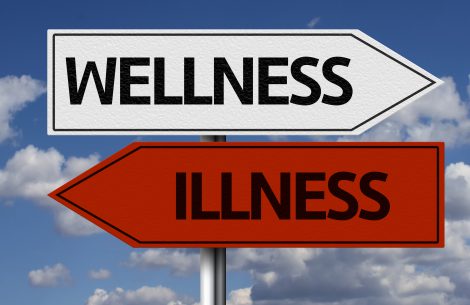Preventative medicine has become popular today. A growing awareness of the relationship between lifestyle, diet and exercise has undoubtedly prompted a lot of this popularity. Growing numbers of people suffering from chronic diseases like heart disease, NAFLD, diabetes, CFS (chronic fatigue syndrome), and more have likely also contributed.
Disease prevention, however, isn’t new. Ancient traditions like Chinese Natural Herbal Medicine and Ayurveda have had prevention at the center of their practice for thousands of years. For example, codified several principles in a book written around 2,600 BCE titled Hunagdi Neijing, or The Yellow Emperor’s Classic of Medicine. That was more than 4,400 years ago!these principles remain today. Advances in science, technology and medicine have only reinforced their value. The knowledge provided by science and medicine has encouraged the evolution and innovation, and often the terminology, of these principles. These principles can also be seen reflected in the modern practice of Western nephropathy.
The traditional principles are simple. They are direct and straightforward. For disease prevention and preventative medicine, they still provide a solid framework to promote health and reduce the risk of disease.
A Healthy Diet
“You are what you eat” has been a popular saying for a long time. It seems too simple, but the food that goes in the mouth fuels the body. Nutritious food provides essential vitamins, minerals, amino acids, enzymes and other compound like antioxidants and anti-inflammatory compounds that support health.
Foods lacking nutrients use up those the body needs. When this happens, metabolism gets disrupted. The immune system gets weak. One feels drained. It doesn’t happen overnight, but it does happen.
Recent studies have even reported the food we eat affects our DNA and genes. The importance of diet cannot be understated. It’s why diet remains one of the key foundational elements of disease prevention.
Work Balanced by Rest
We need to work to feed, clothe and house ourselves and our families. We also need to rest. Over-work stresses the body and mind. Today we know chronic stress has a dramatic effect on overall health.
Exercise fits into this category as well. For most people historically, work required physical exertion. There was little need or desire to exercise. In China, Taoist and Buddhist monks may have embraced martial arts to offset the sedentary practices of meditation, but they were the exception. Only recently with the advent of machines and computers, generally-speaking, did work become a sedentary effort. As a form of physical exertion, exercise puts stress on the body. Like work, it must be offset by rest.
Mental Health
How we think plays a big role in how we feel and act. It also figures into how we deal with stress and the ups-and-downs of life. Traditional Chinese Medicine also holds that state of mind influences more than momentary choices of what to eat and when to rest, and the consequences of those choices. According to the tradition, mental health empowers an individual to resist diseases, improves survivability or how the body responds to illness, and even prolongs life. Modern research into the relationship between mental health, stress, depression and the brain support this.
Safe, Clean Living Environment
This element includes where you live, what you wear and even where your food comes from and how its prepared. This isn’t a mystical approach, but rather a practical approach to living. A good way to understand this is through the example of second hand smoke. Even if you didn’t smoke a day in your life, constant exposure to second hand smoke can lead to lung cancer. This element recognizes the importance of the environment we surround ourselves with, and the need to ensure it promotes health.
Proper Hygiene
The understanding of hygiene has evolved with science and our ability to see the microscopic world! Today, hygiene seeks to remove the risk of exposure to germs from food, water and even the environment. A modern understanding adds the importance of hand-washing and keeping the tools like computers and phones clean to prevent the spread of disease.
Education
The Huangdi Neiing introduced the concept of “treating the undiseased.” We would say preventative medicine. The practice includes strengthening the body and mind through the previous practices mentioned. It also involves teaching and helping the patient to make good choices. This means the patient must understand why the choices are good, an understanding that comes through education.
Harmony with Nature
Good choices for health change with the season. In winter when there is less sunlight, the body needs other types of food and exercise, for example, than it does during the summer. As the seasons change, so too does the body’s needs. Harmony with nature isn’t simply about a good clean environment, hygiene and food. It means a constant awareness and adaptation as the needs shift. In its most basic form, it means in winter, when it’s cold, we need to wear more clothes.
Constant awareness and adaptation to ever-shifting needs keeps the body and mind strong. And it promotes wellness and prevents disease. Together with the other six principles, it provides a solid foundation for a lifetime of health.

